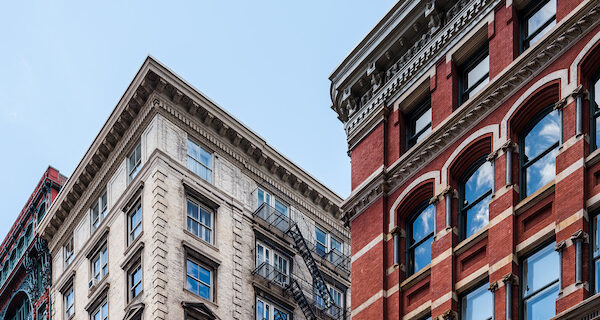Balancing Preservation & Comfort: Heating Historic Buildings Effectively

Visitors step into a historic building—whether it’s a church, library, courthouse, or community center—expecting to experience a meaningful connection to the past. These sites often embody architectural grandeur and cultural legacy, offering a unique atmosphere that connects people to their roots.
Maintaining these spaces, preserving their aesthetics while also ensuring visitors feel safe and comfortable, can pose some challenges. For facility teams, one of the biggest challenges is maintaining temperature control within a historic building. These older facilities can often be drafty and poorly-insulated, and while installing new centralized heating and ductwork could significantly improve the building, it could also jeopardize its structure and artistic details.
Even with limited options for retrofitting the heating system in a historic site, there are practical steps to make the space more accommodating for year-round services.
In Historic Spaces, Heating Can Be Tricky
While modern buildings are comparatively easy to heat, the owners of older facilities may encounter a number of obstacles as they seek consistent temperatures.
Size and layout are significant factors. Historic buildings often feature soaring ceilings and cavernous gathering spaces, particularly in the case of older churches or synagogues. These architectural features are certainly inspiring, but they create a massive volume of air that must be heated. Because warm air naturally rises, much of the heat from floor-level systems quickly drifts up toward the rafters, leaving ground-level visitors feeling chilly.
The building materials used can also present challenges. Many historic buildings were constructed with thick stone or brick walls, which are effective at holding cold temperatures. However, when these materials cool during the winter, they act as a heat sink, pulling warmth out of the air. In the case of old church buildings, stained-glass windows, while beautiful, often lack modern insulation and allow significant heat loss.
In fact, heat loss can be a more general problem in older buildings, which typically lack insulation in walls, ceilings, and floors. Together, all of these issues make it hard to keep these time-tested facilities sufficiently inviting once winter weather rolls in.
Why Retrofitting A Central Heating System Doesn’t Always Work
For facilities teams considering all the available options for keeping their building warm, adding or upgrading a central heating system may seem like an obvious choice. However, the very nature of occupying a historic building can pose challenges. Examples of these challenges include:
- Spatial Limitations: Many older buildings simply don’t have the space for ductwork or mechanical rooms without significantly altering their structure. And those kinds of alterations can sometimes be vexing to visitors, who may place a high premium on tradition and historicity.
- Preservation Restrictions: Along the same lines, any modification that could damage or obscure historic details may be prohibited by preservation guidelines. Cutting through stone walls or altering ceilings to accommodate ducts is rarely allowed in buildings designated as historic.
- Aesthetic Considerations: Even if technically possible, installing large vents and ductwork can detract from the historic character of a space, creating a visual distraction and compromising the rarified feel of the space.
Above all, the complexity of installing centralized systems in older buildings drives up costs significantly, often putting them out of reach for facility teams already managing limited budgets.
Using Unit Heaters To Create Comfort
An alternative option for heating a historic building is to use unit heaters. These can be mounted from ceilings or walls where they direct warm air to wherever it’s needed most, without calling for extensive renovation work.
While unit heaters aren’t designed to raise the ambient temperature building-wide, they do provide targeted comfort. Unit heaters can be strategically placed to focus warmth where visitors gather. By directing air circulation to occupied areas, old buildings can maintain comfort without the need to heat every cubic foot of space.
Because they don’t require major structural alterations, unit heaters can be installed with minimal disruption to the building’s fabric. This makes them ideal for historic spaces where preservation is paramount.
And, by heating only occupied zones rather than the entire property, unit heaters reduce energy waste. This focused heating approach helps facility teams manage utility costs during the coldest months.
Where Historicity Meets Comfort
Ultimately, the goal of heating a historic building is not just comfort. It’s about preserving the sense of rootedness while ensuring visitors feel welcome throughout the year. Unit heaters allow legacy buildings to achieve this balance by offering warmth without compromising the building’s architectural integrity.
For facilities teams, the decision often comes down to practicality. Unit heaters provide a reliable, efficient, and respectful solution that keeps buildings comfortable through the coldest months, making it a smart option when centralized heating isn’t viable.
By Jamie Tuinstra
Jamie Tuinstra is a product manager at Modine Manufacturing, where he oversees product development, profit optimization, and customer satisfaction for both new and established product lines. Modine is a global company headquartered in Racine, Wisconsin (USA), with operations in North America, South America, Europe, and Asia.

